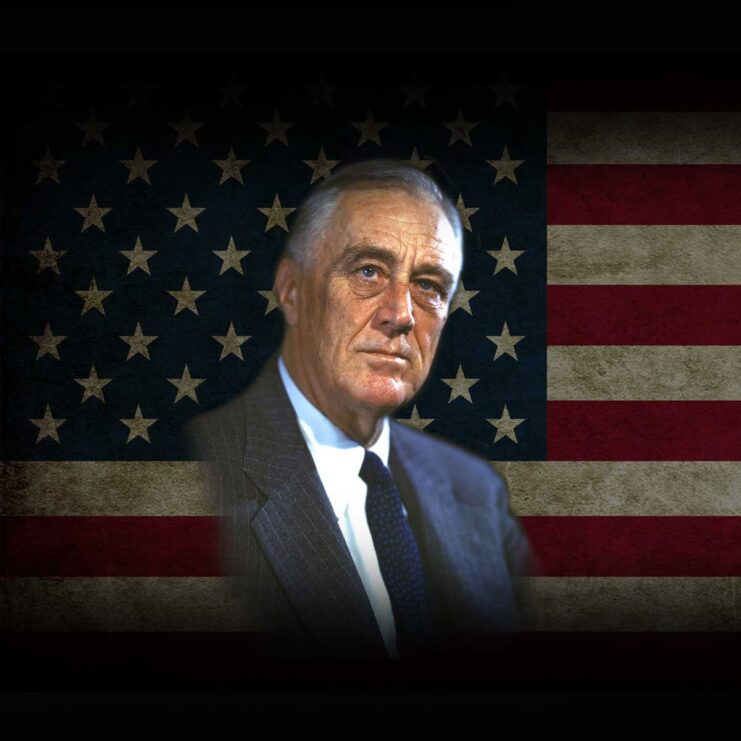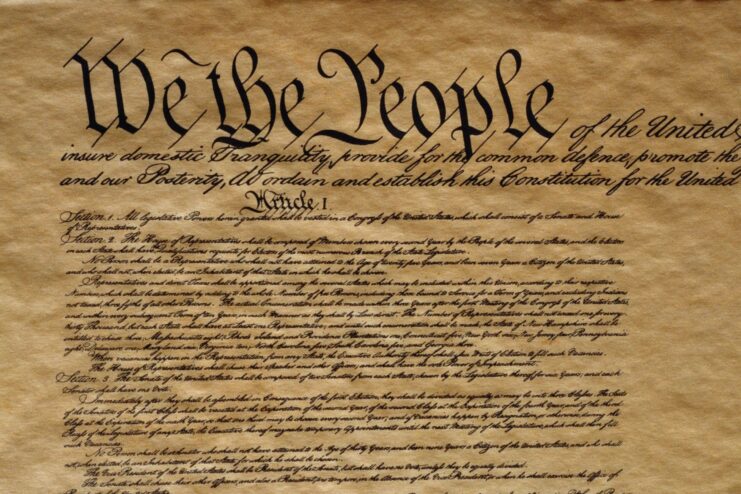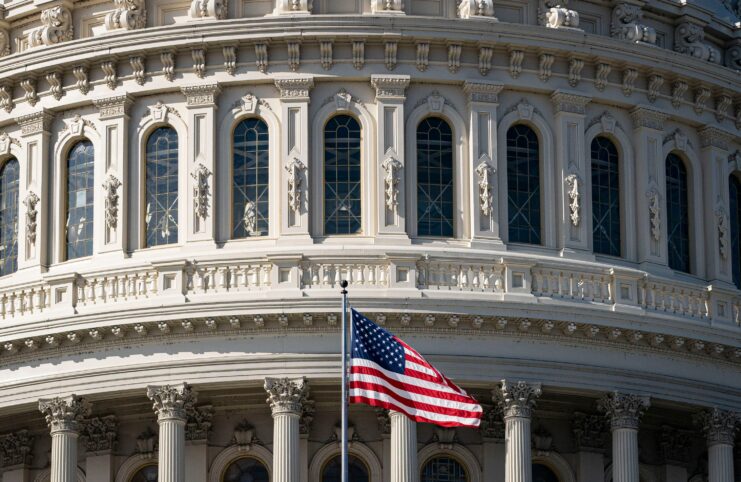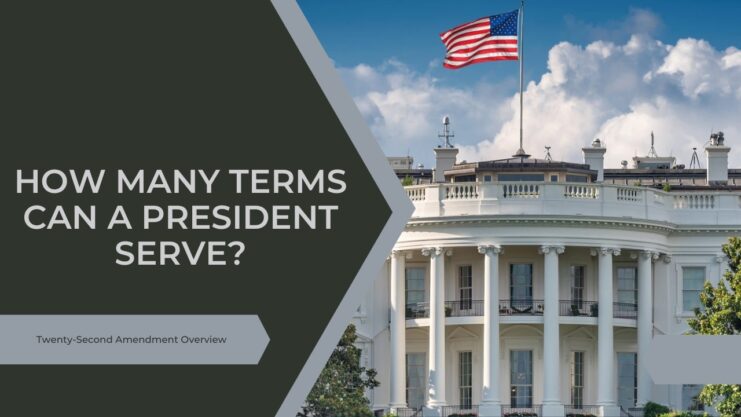Picture this: It’s a chilly November evening, and you’re huddled around the television with your friends and family, eagerly awaiting the results of the presidential election. As you discuss the candidates’ campaigns and potential policies, you begin to wonder, “How many terms can a president serve?” That’s where the Twenty-Second Amendment comes into play.
In this blog post, we’ll delve into the intricacies of the Twenty-Second Amendment, exploring its historical context, rationale, and implications for presidential terms. Along the way, we’ll answer your burning questions, providing valuable insights and making complex information easily digestible for all. So, buckle up and get ready for a captivating journey into the world of presidential term limits.
The Early Days – Precedent Set by George Washington

Before we dive into the Twenty-Second Amendment, let’s travel back to the early days of the United States. When George Washington, the nation’s first president, stepped down after two terms in office, he set a precedent that would be followed by his successors for over a century. Washington’s voluntary departure after eight years in power was driven by his belief that the young nation needed new leadership to grow and evolve.
Despite Washington’s example, the Constitution made no mention of term limits for presidents at the time. However, the precedent he established held strong until the 1940s, when Franklin D. Roosevelt (FDR) was elected to an unprecedented four terms.
The Game Changer – Franklin D. Roosevelt’s Four Terms

Franklin D. Roosevelt’s election to a third term in 1940 marked a turning point in American political history. Before FDR, no president had ever sought or achieved a third term. His decision to break with tradition was fueled by the ongoing crises at home and abroad, including the Great Depression and the looming threat of World War II. Many Americans believed that FDR’s experienced leadership was crucial during these challenging times.
FDR’s presidency was transformative, introducing social and economic programs through his New Deal policies that fundamentally changed the role of the federal government. When he was reelected for a fourth term in 1944, some supporters viewed it as a testament to his effectiveness in office, while critics raised concerns about the concentration of power in the hands of a single individual.
The Birth of the Twenty-Second Amendment
FDR’s extended time in office prompted a national conversation about the importance of presidential term limits. Following his death in 1945, Congress took action. In 1947, they proposed the Twenty-Second Amendment, which sought to limit the number of terms a president could serve. After a lengthy ratification process involving the states, the amendment was officially adopted on February 27, 1951.
The Nuts and Bolts of the Twenty-Second Amendment
Now that we understand the historical context of the Twenty-Second Amendment let’s dive into its specifics. The amendment states that “No person shall be elected to the office of the President more than twice.” This effectively limits a president to two full terms or a maximum of eight years in office.
However, there is a notable exception. The amendment also specifies that if a person succeeds to the presidency due to the death, resignation, or removal of the previous president and serves for more than two years of that term, they may only be elected once more. In other words, if a vice president takes over the presidency and serves for less than two years, they can still run for two full terms. This ensures that a president who unexpectedly assumes office isn’t unfairly penalized.
Impact of the Twenty-Second Amendment on U.S. Politics

The implementation of the Twenty-Second Amendment has had several noteworthy consequences on American politics. First and foremost, it has enshrined the concept of regular leadership change at the highest level of government. This fosters an environment that encourages new ideas, policy shifts, and political dynamism.
Additionally, term limits can prevent the concentration of power in the hands of one individual, thereby reducing the risk of authoritarianism. By ensuring that no president can hold office indefinitely, the amendment preserves the democratic principles upon which the United States was founded.
On the other hand, the Twenty-Second Amendment has its critics. Some argue that term limits can stifle the continuity of successful policies and hinder long-term strategic planning. They contend that if a president is performing well, the electorate should be allowed to keep them in office without artificial constraints.
Famous Examples – Presidents Affected by the Twenty-Second Amendment
Since its adoption, the Twenty-Second Amendment has influenced several presidencies. Notably, it prevented popular presidents like Dwight D. Eisenhower and Ronald Reagan from seeking third terms, despite their continued high approval ratings. In both cases, their political parties faced the challenge of finding new candidates who could maintain their predecessors’ momentum.
The amendment has also shaped the way presidents approach their second terms. Knowing they are constitutionally barred from running again, some leaders may take bolder stances on controversial issues or focus on solidifying their legacy. The so-called “lame duck” effect, where a president’s influence wanes as their term comes to an end, can be exacerbated by the knowledge that they will not have another chance to implement their policies.
Twenty-Second Amendment – Relevance in Today’s Political Landscape

In our current political climate, the Twenty-Second Amendment remains a hotly debated topic. Its supporters maintain that term limits promote the democratic transfer of power and prevent the potential abuse of executive authority. Critics, on the other hand, argue that it may artificially constrain the ability of successful presidents to continue their work and unduly influence the political landscape.
However, despite these debates, the Twenty-Second Amendment remains an integral part of the U.S. Constitution. It serves as a reminder of the importance of balance and the value of fresh perspectives in the highest office in the land.
Closing Thoughts
From George Washington’s self-imposed two-term precedent to Franklin D. Roosevelt’s groundbreaking four-term presidency, the question of how many terms a president can serve has shaped the course of American politics. The Twenty-Second Amendment, with its fascinating history and enduring relevance, has codified the principle of leadership change into the very fabric of the United States democratic system.
The amendment has sparked debates, influenced presidencies, and shaped the way leaders approach their time in office. By understanding the intricacies of the Twenty-Second Amendment, we can better appreciate the delicate balance of power that lies at the heart of the American political system.
Related Posts:
- Sexually Transmitted Diseases (STD) Syndromes Overview
- How Many Casinos Are in Las Vegas? Exploring Sin…
- Can a 4K Monitor Run 1440P? - Difference Between Them
- How Can People Hear My AirPods? - Science of Sound
- Why Are Snapchat Bots Adding Me Randomly? How Can I…
- Can I Use Any Coaxial Cable For The Internet? -…












